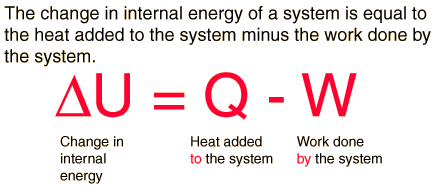In terms of barbell movements, this is probably the easiest way to think about the work being done. We can ignore heat exchange for all practical purposes, and the bar starts from a dead stop and ends in a dead stop (if you're doing it right) so the change in Kinetic Energy between the two positions is 0. So what happens is that all the work being done is either Potential Energy being added to the barbell, or removed from the barbell, as we move it through the gravitational field. This makes sense... You drop a barbell from a foot and it has a certain amount of energy when it hits the ground - you drop it from 1m higher and it has alot more energy when it hits because gravity has acted on it over a further distance.











